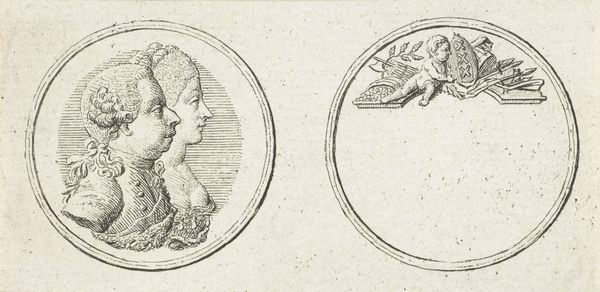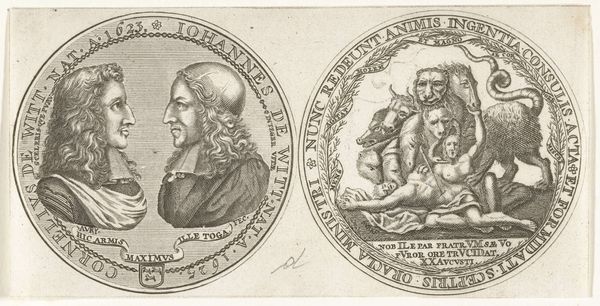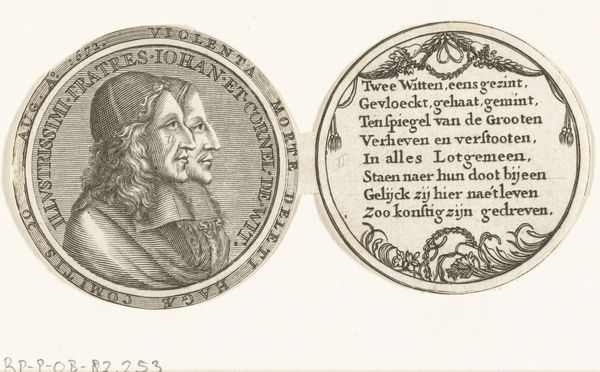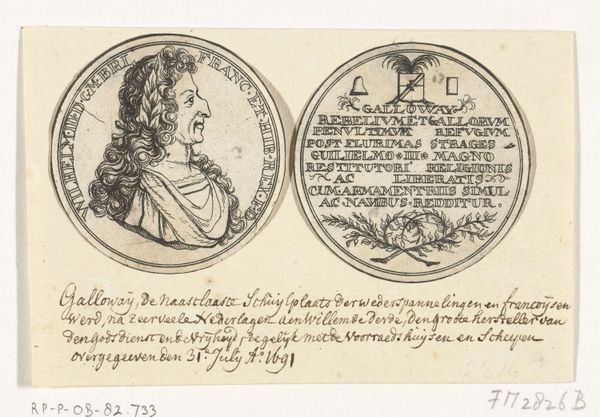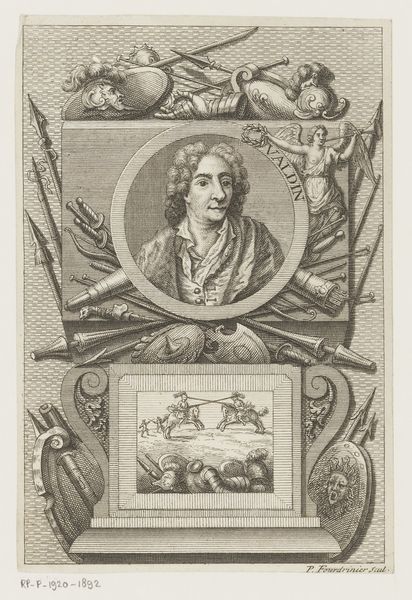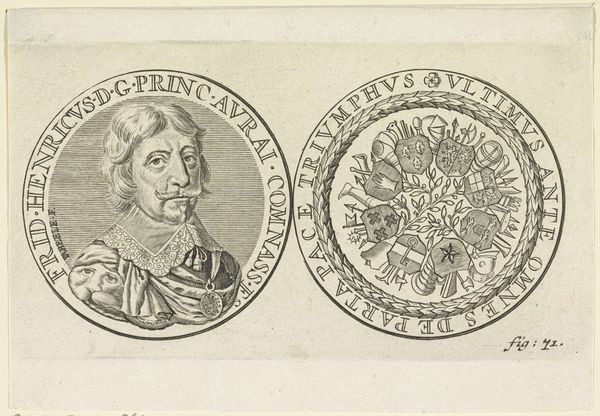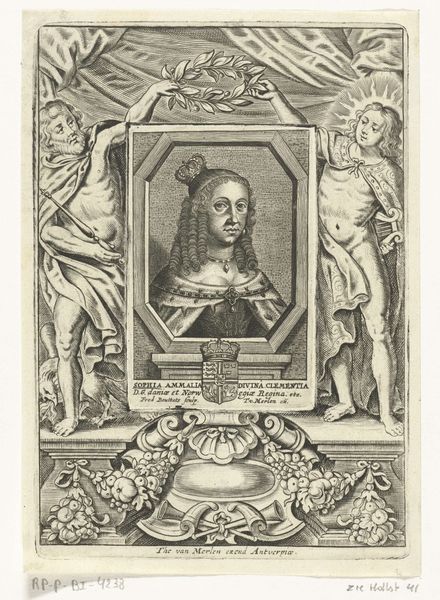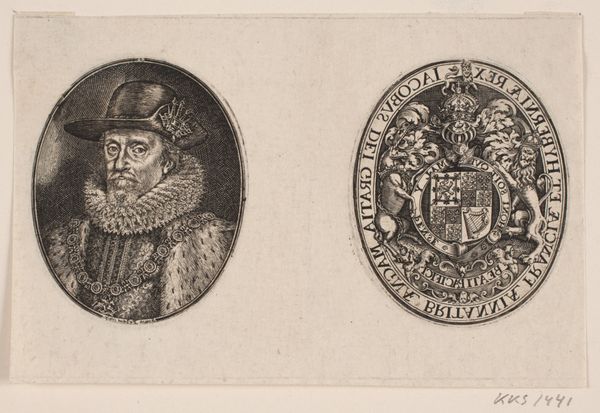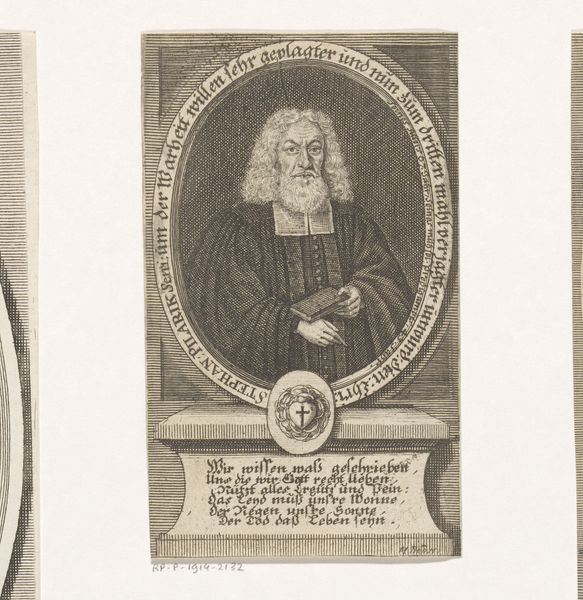
print, etching, engraving
#
portrait
#
baroque
# print
#
etching
#
history-painting
#
engraving
Dimensions: height 52 mm, width 105 mm
Copyright: Rijks Museum: Open Domain
Editor: This print, made sometime between 1672 and 1699, commemorates the death of the brothers De Witt. It’s quite graphic and unsettling… what strikes you most about it? Curator: The potent use of visual symbolism speaks volumes, doesn’t it? The dual portrait, for instance, evokes the Roman god Janus, looking both to the past and the future, suggesting perhaps the brothers’ comprehensive influence. What of the ladder and impaled bodies – what historical echoes do those stir in you? Editor: It's clearly a reference to their brutal execution. That ladder suggests public torture, right? And the skull below…it's just…awful. Curator: Indeed. Consider the broader context: the Rampjaar, the disastrous year of 1672, the political upheaval. This print encapsulates collective trauma, turning the De Witts into martyrs. Does this shift your understanding of the piece? Editor: Definitely. I was just seeing the violence, but now I see the artist using those symbols to create a political narrative. Curator: Precisely! Images are never neutral. This artist harnessed potent imagery to cement the De Witts within a particular historical memory, one of injustice and martyrdom. The putti are rather sinister here, don't you think? Innocence lost perhaps. Editor: Yeah, the putti usually signify innocence, but here they look like they’re part of something darker, definitely changing the symbolic meaning. It makes it all so much more disturbing, actually. Curator: It's fascinating how this print, though small, encapsulates such immense political and emotional weight. The symbols serve as powerful reminders of the past, continuing to shape how we understand that era. Editor: I see it completely differently now, moving past the surface horror and into its political intention and lasting message.
Comments
No comments
Be the first to comment and join the conversation on the ultimate creative platform.
